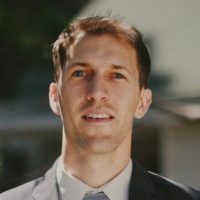Collaborative and Efficient Indoor Localization for Mobile Systems

Speaker: Paul Martin
Affiliation: Ph.D. Candidate - UCLA
Abstract: Research in indoor localization has traditionally been concerned with providing scalable, cost-effective solutions for improving position estimation accuracy. Towards this end, researchers have explored RF-based ranging techniques, sensor fingerprinting methods, vision- and optics-based approaches, and inertial dead reckoning as potential mobile positioning technologies. Each of these methods presents a unique set of challenges—e.g., nonlinear and multipath RF propagation, training and infrastructure deployments, and sensor drift. Accompanying each of these challenges are overheads in the form of energy expenditure, increased computation, or increased wireless channel congestion. Reducing these overheads is a necessary step towards enabling indoor localization techniques to permeate the mobile market. This work focuses on methods for reducing the various overheads associated with localization by fusing position estimates with various low power sensing modalities, such as pressure, odometry, and even time. To do so, we distill localization routines into a spatial and temporal sequence of estimates and corresponding uncertainties. These estimates may be absolute, as is the case with GPS or fixed anchor nodes, or relative as with odometry and range. Each measurement is then treated as an edge in a graph whose nodes represent position estimates across time, allowing for joint optimization of multiple device locations across multiple sensor measurements and providing a method for easily integrating additional constraints into pre-existing positioning techniques.
We divide this work into three thrusts: (i) We present an architecture for collaborative indoor localization techniques as a single cohesive estimation routine. We leverage graph realization techniques as well as sensor fusion results from the sensor network literature to jointly optimize otherwise disjoint measurements, fusing absolute and relative measurements in a single optimizing routine; (ii) We explore ultra-wideband RF time-of-flight measurements as a method of providing accurate non-line-of-sight distance measurements between smartphones and other mobile devices, integrating these measurements to provide accurate, real-time error corrections for mobile positioning; and (iii) We construct a generic, open-source testbed upon which to analyze the algorithms and measurements employed, facilitating easier comparison and development of state-of-the-art positioning techniques and reducing the cost of obtaining measurements with corresponding ground truth observations.
Biography: Paul Martin received his BS in Electrical Engineering at the University of Pennsylvania in 2011, focusing on the construction and control of quadrotor UAV systems. While at UCLA, Paul received an MS in Electrical Engineering with research on low power embedded systems including energy harvesting, real-time operating systems, and compressive sensing techniques. In recent years, Paul has explored practical implementations of indoor localization techniques and their applications in high-fidelity pedestrian and robot tracking systems. He recently jointed Qualcomm Research as a Senior Engineer in vision-based UAV flight controls.
For more information, contact Prof. Mani Srivastava (mbs@ee.ucla.edu)
Date/Time:
Date(s) - Aug 16, 2016
4:00 pm - 6:00 pm
Location:
E-IV Maxwell Room #57-124
420 Westwood Plaza - 5th Flr. , Los Angeles CA 90095
